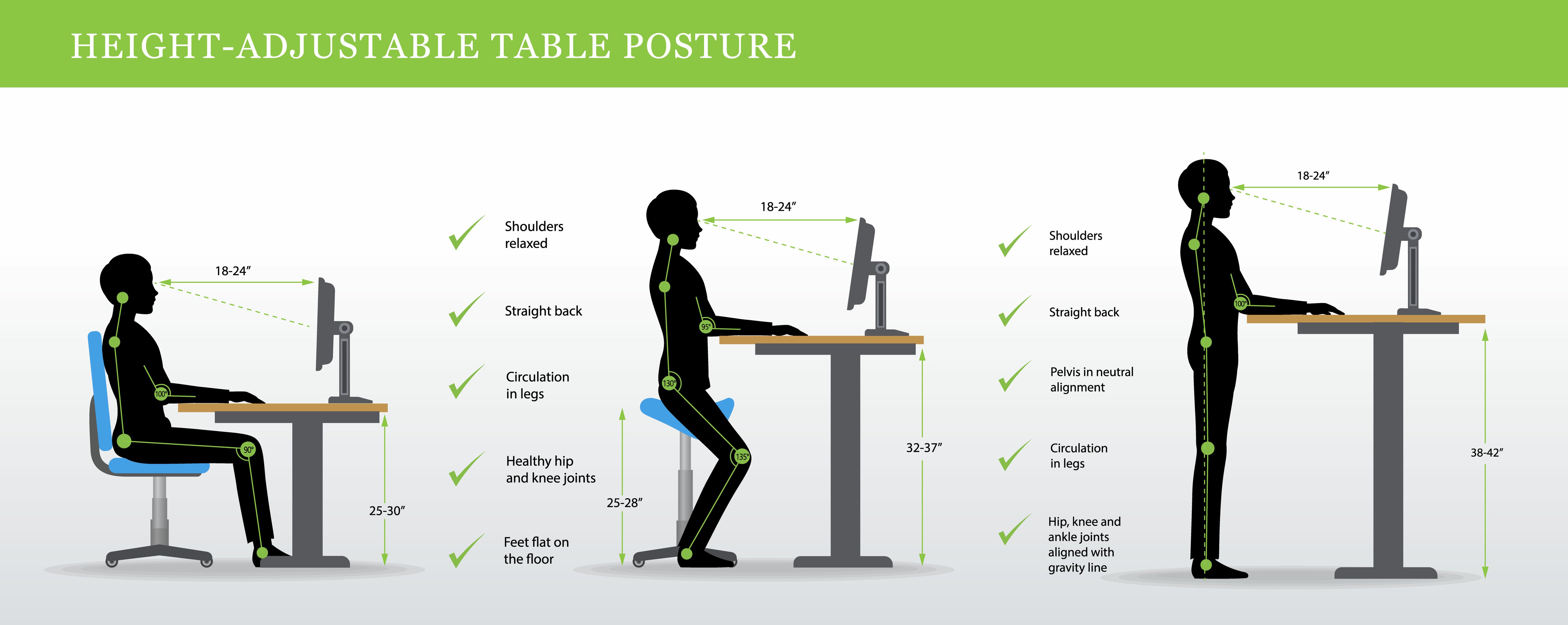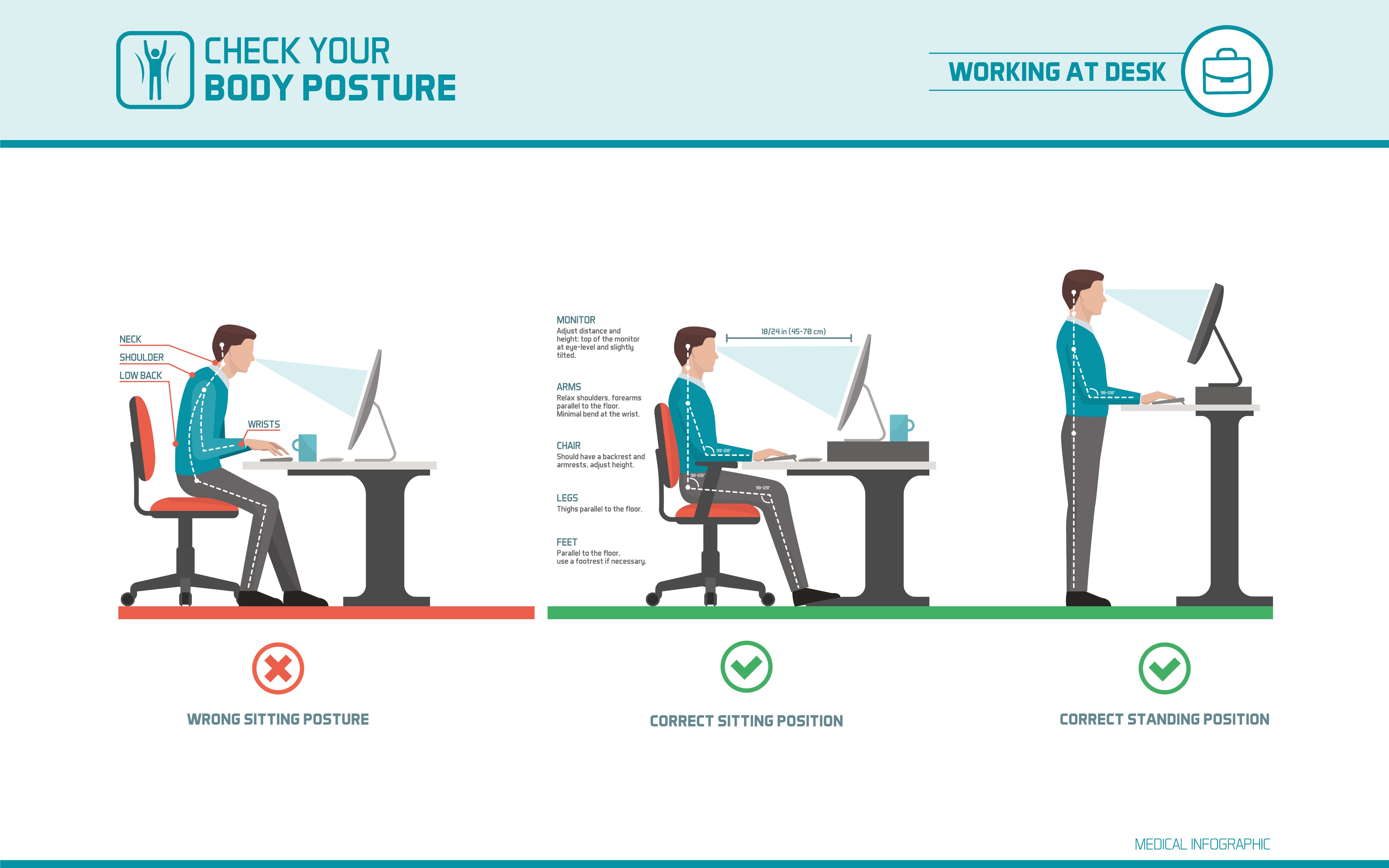The virtual workspace is becoming the new normal, with an increasing number of organizations embracing remote work arrangements.
While this shift offers flexibility and convenience, it also presents unique challenges in the realm of Environment, Health, and Safety (EHS). Ensuring the well-being of remote employees requires proactive measures to address ergonomics, mental health, and safety protocols in a decentralized environment. Here’s what you need to consider when it comes to navigating EHS challenges in virtual work environments.
Ergonomics in the Home Office
Transitioning to a home office environment often leads to compromises in terms of proper ergonomic setup. Unlike standardized office workstations, home setups can vary greatly, often lacking the ideal furniture and equipment. This can contribute to physical discomfort, musculoskeletal disorders, and decreased productivity. To prioritize the well-being and performance of remote employees, organizations can take the following steps:
Provide Comprehensive Guidance
Develop detailed guides and infographics on setting up an ergonomic home office. Highlight key elements like:
- Chair height and adjustability: Ideally, thighs should be parallel to the floor with knees bent at 90 degrees. Adjustable chairs are crucial for fine-tuning this crucial aspect.
- Desk height: Aim for a height that allows forearms to rest comfortably on the desk while using the keyboard and mouse. Adjustable desks offer optimal flexibility.
- Monitor placement: Position the monitor directly in front of you, slightly below eye level, to prevent neck strain. Consider monitor arms for adjustable positioning.
- Keyboard and mouse: Choose ergonomically designed keyboards and mice to fit the natural curve of your hands and wrists. Wrist rests can offer additional support.
- Lighting: Avoid glare and ensure adequate lighting to prevent eye strain. Opt for natural light when possible and supplement with adjustable task lighting.


Offer Financial Assistance
- Consider subsidizing or partially reimbursing employees for ergonomic furniture like chairs, standing desks, and monitor arms.
- Partner with furniture suppliers to offer discounted ergonomic products to your employees.
Encourage Movement and Breaks
- Regularly remind employees to take breaks throughout the workday to stretch, walk around, and change positions.
- Promote the use of standing desks or desk converters for alternating between sitting and standing throughout the day.
- Share simple stretches and exercises that can be done at the desk to combat stiffness and fatigue.
Additional Considerations
- Provide a variety of resources on proper posture, mindfulness techniques, and healthy habits for remote work.
- Encourage open communication about any physical discomfort employees experience and offer guidance on resolving issues.
- Partner with occupational therapists or ergonomics specialists to conduct virtual assessments and provide personalized recommendations.
By implementing these measures, organizations can help their remote employees create a comfortable and productive workspace that prioritizes their physical well-being and minimizes the risk of injuries. Remember, investing in ergonomics is an investment in the long-term health and productivity of your remote workforce.
Mental Health Matters
While remote work offers flexibility and convenience, it can also present unique challenges for mental health. The blurring of lines between work and personal life, physical isolation, and potential feelings of loneliness can contribute to stress, anxiety, and burnout. As an organization, prioritizing the mental well-being of your remote employees is not just the right thing to do, it’s also essential for maintaining a productive and engaged workforce. Here are some key steps you can take:
Normalize the Conversation
- Open communication: Create a culture where employees feel comfortable discussing mental health challenges without fear of judgment or stigma. Regularly host workshops and training sessions on mental health awareness and encourage open dialogue about stress management and well-being strategies.
- Leadership buy-in: Ensure leadership demonstrates genuine care and understanding about mental health issues. Leaders can share their own experiences and vulnerabilities to normalize the conversation and encourage transparency.
- Promote diversity and inclusion: Be mindful of how cultural differences and individual needs may impact mental health. Offer resources and support that are inclusive and cater to a diverse range of experiences.
Provide Accessible Mental Health Resources
- Employee Assistance Programs (EAPs): Ensure all employees have access to confidential EAPs with licensed mental health professionals. Consider offering various access points, including phone, video conferencing, and online chat.
- Online therapy platforms: Partner with or subsidize access to online therapy platforms that provide convenient and affordable individual and group therapy sessions.
- Well-being apps and resources: Offer access to mindfulness apps, meditation resources, and online self-help tools that employees can use at their own pace and convenience.
Promote Work-Life Balance
- Set clear expectations: Establish clear boundaries between work and personal time. Encourage employees to stick to designated work hours and avoid responding to emails or messages outside of work hours.
- Flexible work arrangements: Offer flexible work arrangements like remote work options, compressed workweeks, and flexible start and end times to empower employees to manage their personal commitments and prioritize their well-being.
- Paid time off and vacations: Encourage employees to take their full allotted paid time off and vacations to disconnect from work, recharge, and avoid burnout. Consider offering additional mental health days or flexible leave options.

Additional Considerations
- Regular check-ins: Conduct regular one-on-one meetings with employees to discuss their workload, well-being, and any concerns they may have. Encourage open communication and offer support whenever needed.
- Team building activities: Organize virtual team-building activities and social events to foster connection, combat isolation, and create a sense of belonging among remote employees.
- Celebrate successes and achievements: Recognize and celebrate individual and team successes to boost morale, motivation, and overall well-being.
By taking proactive steps to prioritize mental health in the virtual workspace, organizations can create a supportive environment where employees feel valued, safe, and empowered to take care of their well-being. This ultimately leads to a happier, healthier, and more productive workforce. Remember, investing in mental health is an investment in the long-term success of your organization.
Safety Protocols Reimagined
While traditional workplace safety protocols focus on physical hazards and emergency response within a controlled office setting, remote work demands a reimagined approach. Organizations need to adapt existing protocols to address potential safety risks in the home environment and ensure their employees are prepared for emergencies, even when physically dispersed. Here are some key strategies:
Conduct Virtual Safety Assessments
- Develop checklists and guides for employees to self-assess their home workspaces for potential hazards. These could include:
- Electrical risks: Exposed wiring, overloaded outlets, and faulty equipment.
- Trip-and-fall dangers: Uneven floors, loose rugs, and cluttered walkways.
- Fire safety concerns: Blocked fire exits, flammable materials nearby, and lack of smoke detectors.
- Ergonomic risks: Improper chair and desk height, poor lighting, and inadequate wrist support.
- Encourage regular self-assessments and provide resources for addressing identified hazards, such as recommendations for appropriate furniture, fire safety equipment, and ergonomic adjustments.
Invest in Communication Technology
- Utilize communication tools for virtual reporting of incidents and emergencies. Ensure everyone knows how to report and respond to incidents using readily available technology like messaging platforms or collaborative tools.
- Conduct regular simulations and training exercises to familiarize employees with the virtual reporting process and emergency response plans.
- Implement communication protocols for notifying employees during emergencies, even if they are not actively working at the time.
Provide Ongoing Safety Training
- Fire safety in the home, including extinguisher use and evacuation procedures.
- Cybersecurity awareness to prevent phishing attacks and data breaches.
- Physical security measures to protect sensitive information and equipment.
- First-aid basics for common workplace injuries.
- Update training materials regularly to reflect changes in regulations and best practices.
- Encourage employees to complete training modules promptly and offer refresher courses periodically.
Additional Considerations
- Develop and communicate clear policies and procedures on remote work safety, including expectations for maintaining a safe work environment and reporting hazards.
- Partner with insurance providers to assess potential risks and develop comprehensive safety plans for remote employees.
- Consider offering safety equipment like fire extinguishers and first-aid kits to interested employees, potentially with subsidies or reimbursements.
By implementing these strategies, organizations can create a proactive approach to safety in the remote work environment. Empowering employees to identify and address hazards, utilize communication tools effectively, and stay informed about safety best practices will contribute to a safer and more secure work experience for everyone, even when physically apart. Remember, prioritizing safety is not just about compliance, it’s about creating a responsible and sustainable remote work culture.
Compliance Conundrum
Navigating different regional and national regulations adds another layer of complexity to managing EHS in a virtual workspace. Organizations should:
- Stay informed: Regularly update themselves on evolving regulations and compliance requirements related to remote work safety and ergonomics.
- Seek legal counsel: Consult legal professionals to ensure your organization’s policies and practices comply with relevant EHS laws and regulations.
- Leverage technology: Utilize software and online platforms designed to manage EHS compliance tasks and track employee safety training completion.
Remember: adapting to the changing landscape of remote work requires a strategic approach to EHS. By prioritizing ergonomics, mental health support, and innovative safety protocols, organizations can create a safe and healthy virtual workspace for their employees while maintaining compliance with regulations. Keep in mind that investing in the well-being of your remote workforce is an investment in their productivity, engagement, and ultimately, the success of your organization.

